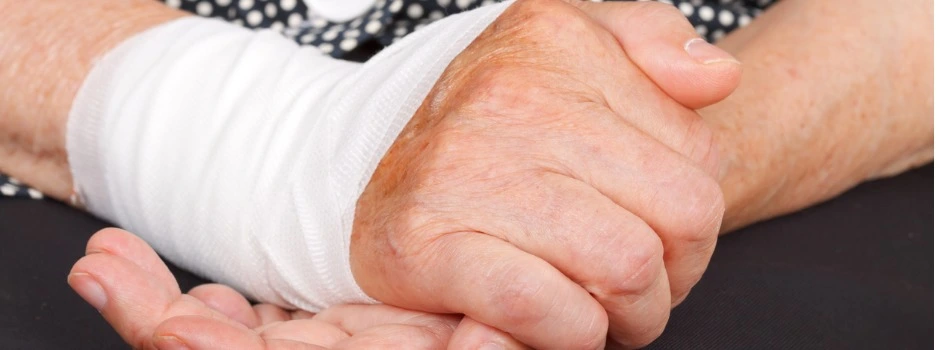Many times, healing a wound means saving a life. For older adults, wounds can take longer to heal and may lead to more serious problems. This is especially true for those with
diabetes,
cardiovascular disease, chronic kidney disease, or morbid obesity. These diseases can restrict blood flow, slowing down the healing process. Additionally, many adults experience thinning skin as they age, meaning the skin is less able to repair itself after it is injured.
Chronic Wounds If an older adult has an infection and develops a wound, it’s more common for that wound not to heal normally on its own. Chronic wounds can have serious consequences such as a life or limb loss,” explains InnovAge’s
Dr. Traci A. Kimball, a board-certified specialist in wound management. Similarly, she says, “be on the lookout for scratches or cuts that won’t heal, and any skin discoloration or changes.”
Chronic wounds can include injuries caused by constant pressure on the skin. They include bed sores, which are more likely to form where the skin covers a bony area – such as the back of the head, shoulders, low back, hips, and heels. Those with diabetes can also develop ulcers on their feet. “Poor circulation, irritation from friction or pressure, and diabetic neuropathy – the reduced or complete loss of feeling pain in the foot – can all play a role in foot ulceration,” explains Kimball.
Protecting and Healing Wounds
If a wound develops, proper care is critical to healing and preventing further complications. “For older adults, all wounds should be treated seriously so that minor ones don’t become chronic,” Kimball says.
Each person’s treatment plan is unique and based on the wound and their overall health. The right dressing is essential, as it provides the best conditions for the wound to heal and protects it from additional harm. For all wound care dressings:
- Keep it on
- Keep it clean
- Keep it fresh
Contact your physician if you see signs of infection around the wound, including:
- Bad odor
- Redness
- Increased swelling, drainage, or pain
- A fever
- A new feeling of being unwell
Diet, hydration, exercise, and other factors can impact how likely a person may be able to recover from a wound. "Wound care is better described as wound management. Simply put, it includes the totality of care required to manage and heal a patient with a skin injury,” says Kimball. “It’s not just about the “hole” in the patient, but the whole patient.”
This post was medically reviewed by Ann Wells, M.D.
